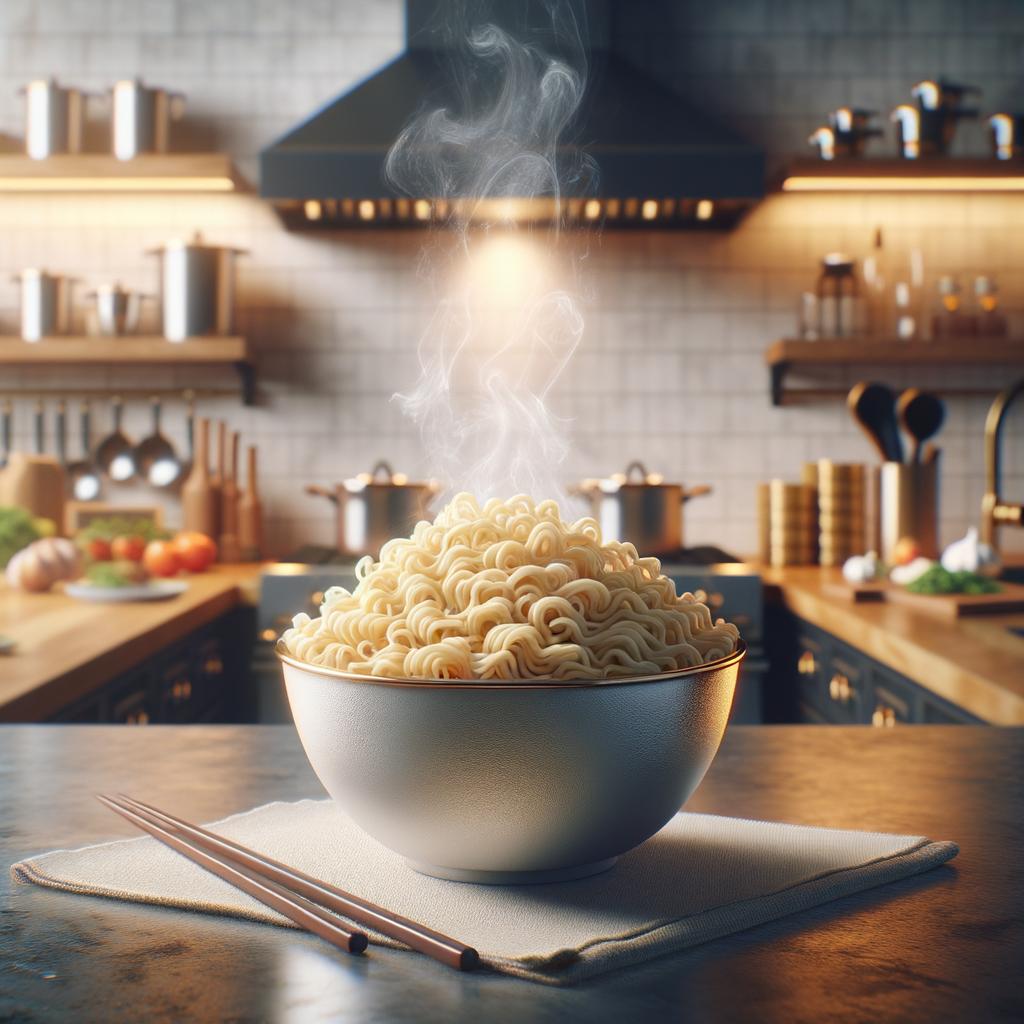Instant Ramen Noodles

Description
Instant ramen noodles are a delightful culinary paradox, a marvel of modern food technology. These thin, long, and curly wheat noodles are pre-cooked, dried, and packaged with an accompanying flavor packet. They boast a distinctive texture - firm yet tender, and a unique ability to soak up the flavors of the broth they're cooked in, resulting in a delightful savory taste. Their golden-yellow color, derived from the kansui (alkaline water) used in their production, is a visual cue to their unique taste and texture. What sets instant ramen apart is its convenience and versatility, ready to be transformed into a quick meal within minutes, simply by adding boiling water.
Primary Uses
Instant ramen noodles are most commonly used to create quick and easy meals. They are the backbone of the ubiquitous ramen soup, a staple in college dorms and households worldwide. However, their use extends beyond just soups. They can be stir-fried, used in salads, or even as a base for more elaborate dishes in a variety of cuisines. In Japan, for example, they are used in 'Yakisoba', a popular street food dish. Their non-culinary uses are mainly in the realm of pop culture, where they have become a symbol of frugality, convenience, and the creative spirit of culinary improvisation.
History
Instant ramen noodles were invented in 1958 by Momofuku Ando, a Taiwanese-Japanese inventor. Faced with food shortages in post-war Japan, Ando sought to create a simple, shelf-stable food that could feed the masses. His invention was a hit, and instant ramen quickly spread across Japan and eventually, the world. The noodles have since become a global phenomenon, with countless variations and flavors reflecting local tastes. They've even found their way into space, with special versions created for astronauts! The humble instant ramen has indeed come a long way from its post-war origins.
Nutritional Information
While instant ramen noodles are undeniably convenient and tasty, they are not typically considered a health food. They are high in carbohydrates and fats (due to the frying process used in their production), and the accompanying soup bases are often high in sodium. However, they do provide a source of protein and can be part of a balanced diet when paired with vegetables and lean proteins. Compared to fresh ramen noodles, instant ramen has a longer shelf life but a higher fat content due to the drying process. Despite their nutritional drawbacks, the cultural impact and enduring popularity of instant ramen noodles cannot be denied.

